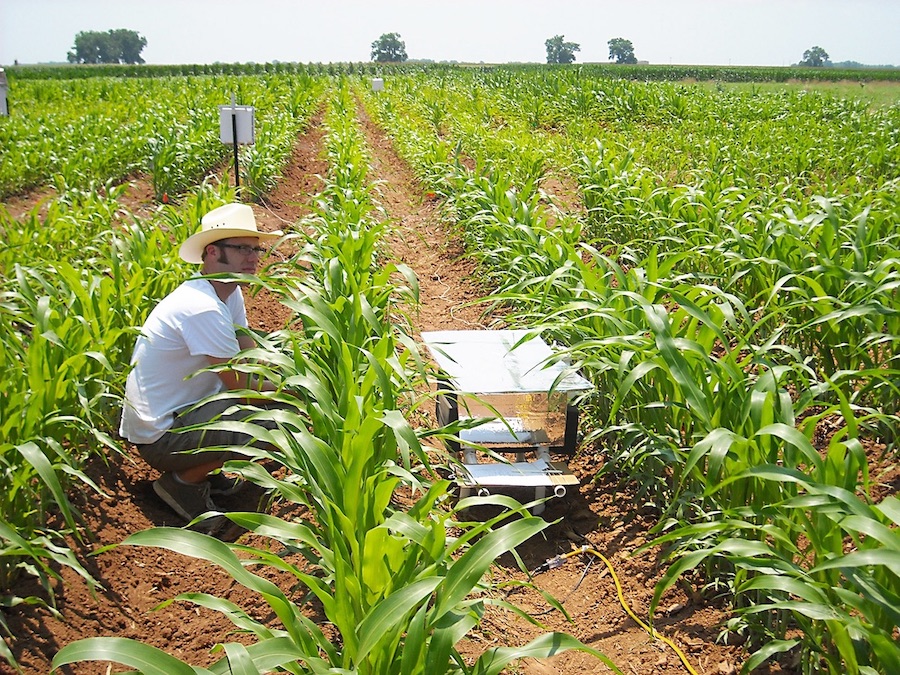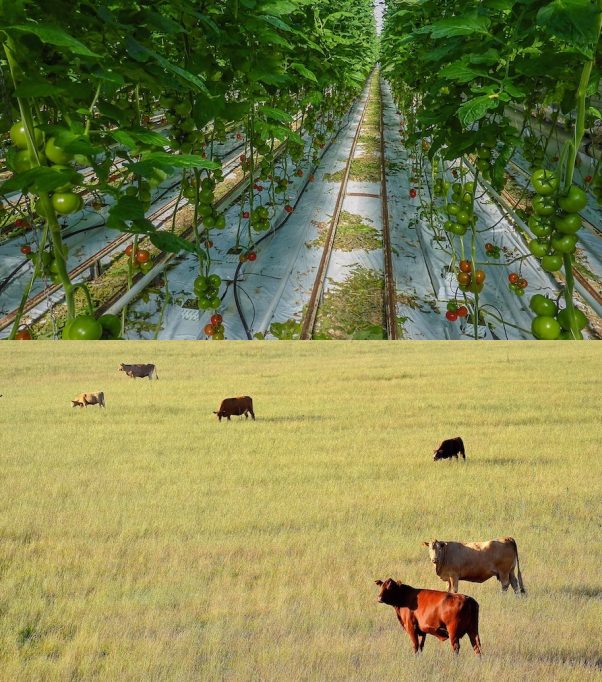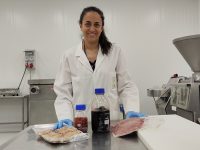Will science feed us all?
Challenging assumptions for a better research

Assumptions that lack scientific evidence are referenced in research publications to legitimize the technical work done. PhD students – who write most of the scientific publications – are busy with the technical part of their manuscript and rarely spend time debating or investigating the societal arguments that support their research goals. Perhaps, the widest assumption cited is the necessity to increase the global generation of energy, materials and food. However, «Is it true that the more energy and material surplus we can generate, the safer and happier our existence will be?» (Marques, 2016). This article presents some aspects of population growth as well as energy and food availability/consumption that are not frequently mentioned in the media and in the tech sciences arena. The goal is to inspire a more profound debate on these topics and claim for a closer interaction between the technical and the social sciences.
Population growth
The concern about a growing population is often used to motivate the need to increase generation of energy, food and materials. However, two important questions can be formulated about this issue: first, by how much is the world population expected to grow? And, secondly, according to the economic doctrines in practice, would such surplus feed who needs it more?
«Perhaps, the widest assumption cited is the necessity to increase the global generation of energy, materials and food»
It took 200,000 years for the human population to achieve 1 billion people but, after the Industrial Revolution, it took just 200 years to reach 7.7 billion (United Nations, Department of Economic and Social Affairs [UN DESA], 2011). Such growth was sustained by high fertility indexes, 5 children per woman in the 1950’s, which dropped to only 2.5 children today, and it is estimated to drop further to 1.9 by 2100 (UN DESA, 2019a). Consequently, most of the countries already witness a decreasing population and the global population is expected to level off around 10.9 billion in 2100 (42 % increase compared to 2019) (UN DESA, 2019a, 2019b). It is important to note that most of this increase will happen in Asia and sub-Saharan Africa, where populations are still growing at high rates (Figure 1). In 2100, Africa will be home to almost 40 % of the global population (in 1950 this fraction was only 9 % and in 2019, 17 %) (UN DESA, 2019a, 2019b) (Figure 1). Africa and Asia together are predicted to account for 83 % of the global population in 2100 (UN DESA, 2019a).

Graph 1. World population estimates by region (1950–2019), and medium-variant projections (2020–2100). As can be observed, the world population will continue increasing quickly in Asia and Africa, while in the rest of continents it will become stable or even decrease. Together, Asia and Africa are expected to represent 83 % of the global population by 2100. Source: UN DESA (2019b)
What is more concerning is that right where population is still growing considerably, poverty predominates. Data published by the World Bank (2018) shows that while important reduction in poverty was observed in some regions of the planet, in Sub-Saharan Africa the number of poor is increasing: 413 million people were living with less than US$ 1.90 a day in 2015 and, if the trend continues, this region will host 9 out of 10 extreme poor by 2030 – almost half of the world population (46%) were living with less than US$ 5.50 a day in 2015 as shown in the last report from the World Bank (2018) –. So, yes, the global population is still expected to grow but: first, we are reaching a plateau of 11 billion people in just a few generations (by year 2100) and, second, population growth is uneven among regions and will considerably take place exactly where the poorest are living. Then, the question that rises is: to what extent is science being able to address the needs of the poor? And, in addition to that, wouldn’t the technology already available suffice to, for instance, eliminate and guarantee zero poverty while we navigate towards a 11 billion-people world?

The access for electricity, for instance, is crucial to guarantee modern human needs. According to a report published in 2018 by the International Energy Agency ([IAE], 2018), 2.7 billion people (35 % of the global population) are still dependent on burning biomass (e.g. wood and crop residue), coal and kerosene for their household needs (specially cooking). The pollutants released indoors are estimated to cause 2.6 million premature deaths each year. This number is higher than the deaths caused by HIV/AIDS and malaria combined (IAE, 2018). What is more striking is that solutions to that problem already exist. According to the International Energy Agency and other sources (IAE, 2018), precarious cooking stoves could be replaced by alternatives that use liquefied petroleum gas (LPG) and the use of LPG would represent a very minor increase in the global demand for fossil fuels and on greenhouse gas emissions. Providing cleaner cooking facilities for this segment of population would surely entail an important decrease of death to indoor pollution.
«Wouldn’t the technology already available suffice to eliminate and guarantee zero poverty?»
The example above shows how population size is not the only relevant variable when it comes to resources production and consumption. The environmental impact (I), for instance, cannot be estimated simply based on population size (P). The consumption pattern (A, from affluence) and how destructive the technologies in practice (T) can be are also crucial to determine environmental impact. These variables are combined in the Ehrlich formula: «I = P x A x T» (Ehrlich & Holdren, 1971). Therefore, even though the world population growth is forecasted to level off in this century, the environment is still under risk of collapse, since our economy is still based on highly pollutant fossil sources (variable T) and unlimited expansion of consumption (variable A). Negligent consumption habits in rich countries exert tremendous impacts in the global economy. According to the Food and Agriculture Organization of the United Nations (FAO), 1.3 billion tonnes of food get lost or wasted every year, this represents one third of the global food production (FAO, 2012). The amount of food wasted or lost in North America and Europe (222 million tonnes/year) is about the same that is produced in Sub-Saharan Africa every year (about 230 million tonnes). In rich countries, each person wastes 95-115 kg of food per year (300 grams per day) while consumers in poor regions only throw away 6-11 kg a year (since 2011, FAO did not update these statistics). These are just a few examples of how an increase in the generation of energy and food, per se, might not address the needs of the population which is in fact still growing.
Energy, foods and land
Another field that deserves major improvements to tackle issues on food and energy access is on land use. The planet has vast arable lands (48 million km2, 37.4 % of world land area [World Bank, 2016]). Unfortunately, a mixture of financialization of the land with bad agricultural practices hampers development where it is most needed.
The conversion of crop plant biomass to make biofuels (e.g. ethanol) and «green-chemicals», for instance, is a possibility yet underexplored. It is often overlooked that the utilization of fossil resources represents just a recent and limited episode in human history. Homo sapiens arose over 200,000 years ago and for most of its existence has used burning of (plant) biomass and muscular power and wind as predominant energy sources for heating, construction and travel. Only about 200 years ago, with the Industrial Revolution, fossil fuels acquired the importance that they have today. Three main energy converters created the basis for such a revolution: i) steam machines fueled by coal; ii) electric engines based on hydraulic power (19th to 20th century) and iii) combustion engines based on petroleum-based fuels, which spread after World War I (Ribeiro, 1968). From 1860 to 2018, world petroleum production raised from zero to 100.7 millions of barrels per day (15.8 billion liters per day). In other words, the carbon that was once in the atmosphere and took millions of years to be deposited under the Earth’s surface is in the process of being extracted and burnt in less than three or four centuries. All this carbon is accumulating in the atmosphere, causing irreversible environmental damage. Biofuels made from biomass, urban waste residues, etc., are some of the renewable alternatives that could replace fossil fuels at great extent.

Production of renewables not only eliminates the need for fossil-based materials but can also bring development for rural countries. Unfortunately, after the food prices crises in 2008, it became common sense in many western countries that the use of crops for fuel competes with food production. After the spark in food prices in 2008, a report published by the World Bank in the same year (Mitchell, 2008) concluded «that the most important factor [for the food prices rise] was the large increase in biofuels production in the U.S. and the EU». This conclusion has been, then, widely cited by the media and also by part of the research community. Misleading cartoons that placed hungry children next to cars being fed with corn (as a biofuel) were constant in the media and helped to create the image that biofuels are villains (so you should better not stop buying gasoline!), that land is very scarce and should preferably be used for food production.
As the World Bank report showed (Mitchell, 2018), there was indeed a cause-consequence effect on the rise in ethanol demand in US and on corn trading-prices. With the increase in US domestic ethanol demand after a Congress decision of 2004 to include biofuel in the transportation fuels, the demand for corn sparked (Mitchell, 2018). Next, in 2005, ethanol entered the Chicago Board of Trade (one of the oldest future exchange markets in the world) as «Ethanol Futures», what accounts for ethanol fuel but also co-products such as «corn distiller’s grain» – used as animal feed – creating a strong link between energy (ethanol) and food (corn) in the financial market (Martin, 2019). In the following years, corn trading-prices increased and, today, many people think that there is a «fuel vs food» competition for land, and forget that the battle field is actually in the financial market.
«Many people think that there is a “fuel vs food” competition for land, and forget that the battle field is actually in the financial market»
What was also mentioned in the World Bank report – in the very last paragraph – but was not spread with the same intensity was the fact that «Biofuels production from sugar cane in Brazil is lower-cost than biofuels production in the U.S. or EU and has not raised sugar prices significantly», and that «removing tariffs on ethanol imports in the US and EU would allow more efficient producers» in developing countries to profit from ethanol exports (Mitchell, 2008). In this line, as elegantly summarized in a report from 2017 authored by eleven experts from diverse countries (US, UK, Brazil, Kenya, etc.) and institutions (including the United Nations and The World Bank) (Kline et al., 2017), the «Simplistic global analyses, headlines, and cartoons that blame biofuels for food insecurity may reflect good intentions but mislead the public and policymakers because they obscure the main drivers of local food insecurity and ignore opportunities for bioenergy to contribute to solutions». The take-home message in this report is that there is «not supported evidence of price transmission to the specific population at [hunger] risk». The experts show that, even when the Food Price Index (based on commodities) showed a spark in 2007-2008 (almost 60% of increase), the FAO global food Consumer Price Index did not fluctuate much (less than 20 % increase). This comparison shows that food prices at the consumer level are not completely tied to speculation in food commodities trading: populations under food insecurity are often isolated from global food trade and more dependent on local production. The publication also raises the concern that food insecurity is a complex problem that should be tackled from diverse angles: education, infrastructure, etc. (Kline et al., 2017). Brazil, which was the leader in ethanol production for many years since the launch of an ambitious program in the 70’s called «Proálcool», is now the second-largest producer (only behind US), responsible for 28% of global production (ca. 3,000 billion liters produced in 2018) (RFA, 2020). As pointed by the World Bank report, the Brazilian ethanol industry, which is based on sugar cane molasses (also a source of edible sugar) did not represent a harm to food access. The possibility of selling other products besides edible sugar is actually an advantage that brings flexibility to the sugar cane sector.
Unproductive fields
Even though Brazil is a good example of coexistence between food and fuel production, the same cannot be said about efficient land use (Brazil is being mentioned here as an example, the concepts apply to many other countries). In 2018, the Dutch exports of agricultural products summed US$ 99 billion (€ 90.3 billion) placing such small and temperate-climate country as the second largest agricultural exporter in the world (US is first) (CBS, 2019). Brazil, which is immensely larger and produces much more in volume compared to The Netherlands, exported US$ 84.6 billion in the same year, US$ 14.4 billion less than The Netherlands (Agrostat, 2019). How is this possible?

While The Netherlands has invested enormously on research creating the world’s most efficient agriculture, Brazil never invested as much as it should in science (as you read this article, young Brazilian researchers are working abroad since the country has little or no capacity to retain or attract scientists). As a consequence of insufficient investments in research and, more importantly, the strong political influence of a few agriculture companies, most of the land is occupied by very large monocultures. While 58.3% of the cultivated area (204 million hectares) are at the hands of only 2% of the farmers (105,548 properties), at the bottom of the pyramid, owning small properties of 10 hectares or less, there are 50% of the farmers (2,5 million properties) squeezed in just 2.3% (8 million hectares) of the cultivated land (Instituto Brasileiro de Geografia e Estatística, 2018). What is more concerning is that some vast areas are unproductive properties: owning the land is profitable per se and the owner has little incentives to make it productive. In Brazil, there is more cattle than people (214.9 million cattle units against 209.3 million people in 2017) and cattle farms occupy 18.6% of the Brazilian total territory (158,6 million hectares), which represents one of the least dense (1.35 cattle unit/hectare, i.e. 1 unit/7,400 m2) and unproductive cattle farming in the world (Ministério da Agricultura Pecuária e Abastecimento, 2019). Besides the enormous area already occupied in the country, cattle farming continues to expand aggressively on the Amazon Region thanks to its powerful lobbyists.
Conclusions
New technologies are a pre-requisite to spread prosperity around the world and create new solutions that alleviate human negative impacts on the environment. Scientists that are only concerned about the technical aspects of their work can easily forget to check how solid the assumptions that legitimize their research are. In this article, some assumptions passed on in the last years were briefly discussed. As an example, the idea that the generation of more energy, food and materials is necessary and will bring prosperity to humankind was analyzed under the light of how our society is currently distributing and using the technologies and resources that are already available.
«Scientists that are only concerned about the technical aspects of their work can easily forget to check how solid the assumptions that legitimize their research are»
In order to keep scientific development closer to the needs of the population as a whole, researchers working on technical aspects of any research field should be more encouraged to reflect on the societal impacts of their new developments. There is a gap between social and technical sciences that has to be eliminated. To start with, young researchers (e.g. masters and PhD candidates) could be encouraged to investigate deeper and debate on the societal assumptions that support their research question. They should be critical on the societal motivations of their scientific publications with the same rigor that they spend on the technical aspects of their papers. This would contribute to minimize the spread of wrong or highly debatable assumptions from paper to paper. Overall, a more rigorous posture on the societal aspects would, in the long term, contribute to guide scientific efforts towards the realization of a «safer and happier» society that, as discussed in this article, will hardly be achieved just by increasing the surplus of energy, food and materials that we can generate.
References
Agrostat. (2019). Estatisticas de comércio exterior do agronegócio brasileiro. Retrieved from http://indicadores.agricultura.gov.br/index.htm
CBS. (2019, 18 de gener). Agricultural export value over 90 bn euros in 2018. Retrieved from https://www.cbs.nl/en-gb/news/2019/03/agricultural-export-value-over-90-bn-euros-in-2018
Ehrlich, P. R., & Holdren, J. P. (1971). Impact of population growth. Science, 171(3977), 1212–1217. doi: 10.1126/science.171.3977.1212
FAO. (2012). Key facts on food loss and waste you should know! SAVE FOOD: Global initiatiative on food loss and waste reduction. Retrieved from http://www.fao.org/save-food/resources/keyfindings/en/
Instituto Brasileiro de Geografia e Estatística. (2018). Censo agropecuário 2017 – Resultados preliminares. Rio de Janeiro: IBGE.
International Energy Agency. (2018). World energy outlook 2018: The future is electrifying. Retrieved on 26 August 2019 from www.iea.org/weo
Kline, K. L. , Msangi, S., Dale, V. H., Woods, J., Souza, G. M., Osseweijer, P., ... Mugera H. K. (2017). Reconciling food security and bioenergy: Priorities for action. GCB Bioenergy, 9(3), 557–576. doi: 10.1111/gcbb.12366
Marques, L. C. (2016). Capitalismo e colapso ambiental, 2nd ed. Campinas: Unicamp.
Martin, S. J. (2019). The political economy of distillers’ grains and the frictions of consumption. Environmental Politics. doi: 10.1080/09644016.2019.1565461
Mitchell, D. (2008). A note on rising food prices (Report number WPS4682). Retrieved from http://documents.worldbank.org/curated/en/229961468140943023/A-note-on-rising-food-prices
Ministério da Agricultura, Pecuária e Abastecimento. (2019). Agropecuária brasileira em números. Retrieved from http://www.agricultura.gov.br/assuntos/politica-agricola/agropecuaria-brasileira-em-numeros
RFA. (2020). Annual world fuel ethanol production (Mil. Gal.). Retrieved from https://ethanolrfa.org/statistics/annual-
ethanol-production/
Ribeiro, D. (1968). Civilization process. Washington, D. C.: Smithsonian Institution Press.
United Nations, Department of Economic and Social Affairs. (2011). World economic and social survey 2011. The great green technological transformation. New York: United Nations. Retrieved from http://www.un.org/en/development/desa/policy/wess/wess_current/2011wess.pdf
United Nations, Department of Economic and Social Affairs. (2019a). World population prospects 2019. Highlights. New York: United Nations. Retrieved from https://population.un.org/wpp/Publications/Files/WPP2019_Highlights.pdf
United Nations, Department of Economic and Social Affairs, Population Division. (2019b). World population prospects, online edition. Retrieved from https://population.un.org/wpp/Download/Standard/Population
World Bank. (2016). Agricultural land (% of land area). Retrieved from https://data.worldbank.org/indicator/AG.LND.AGRI.ZS
World Bank. (2018). Poverty and shared prosperity: Piecing together the poverty puzzle. The World Bank. doi: 10.1596/978-1-4648-1330-6
Disclaimer: The opinions expressed in this article are those of the author and do not necessarily reflect the point of view of the institutions with which he is associated.





